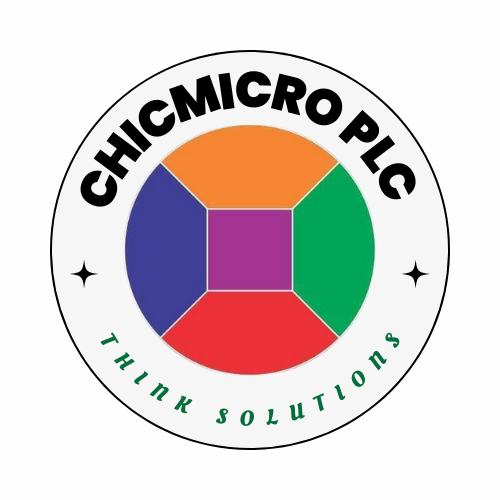
Introduction to E-commerce SEO
E-commerce SEO is a specialized branch of search engine optimization that focuses on enhancing the visibility of online retailers in search engine results. As more consumers shift their shopping habits to online platforms, the importance of implementing effective SEO strategies becomes paramount for e-commerce businesses. Properly executed e-commerce SEO can drive organic traffic, increase conversions, and ultimately contribute to the overall growth of an online store.
The landscape of SEO has continually evolved, especially in the dynamic world of e-commerce. With frequent algorithm updates from search engines such as Google, staying informed about the best practices and changes is critical for online store owners. Furthermore, competitors in the e-commerce sector are increasingly adopting sophisticated SEO tactics, which necessitates a proactive approach to maintain a competitive edge in the marketplace.
Successful e-commerce SEO strategies encompass various components, including keyword research, on-page optimization, technical SEO, and off-page link-building efforts. The selection of appropriate keywords that align with the intent of potential customers is foundational. This includes understanding the nuances of long-tail keywords, which tend to have lower competition while still driving relevant traffic.
On-page optimization involves optimizing individual product pages, category pages, and the overall website structure to ensure both search engines and users can easily navigate the platform. Technical SEO ensures that the website operates efficiently, which can affect search rankings if not managed correctly. Lastly, off-page link-building strategies contribute to establishing authority and reputation within the e-commerce field.
As we delve deeper into the intricacies of e-commerce SEO in this guide, it will become evident that a comprehensive and well-rounded approach is necessary to effectively harness the full potential of digital marketing, ultimately nurturing the growth and success of any online retail venture.
Understanding Keyword Research
Keyword research is a foundational component of e-commerce SEO, serving as the bridge between potential customers and the products offered. It involves identifying the terms and phrases that users enter into search engines when seeking specific products. To maximize visibility and traffic, e-commerce businesses must conduct thorough keyword research to uncover these valuable insights.
Various tools and techniques can assist in this endeavor. Popular platforms such as Google Keyword Planner, Ahrefs, and SEMrush offer vital data that helps in identifying the search volume and competition associated with specific keywords. Understanding search volume is crucial as it indicates how many users are potentially searching for a particular term. This metric allows businesses to prioritize keywords that are not only relevant but also sought after by their target audience.
Additionally, evaluating competition is essential. Keywords with high search volume but also significant competition may be difficult to rank for, particularly for smaller e-commerce sites. Conversely, focusing on long-tail keywords, which are more specific and often less competitive, allows smaller brands to attract niche audiences effectively. For example, instead of targeting the generic term “shoes,” an e-commerce site could optimize for “affordable running shoes for beginners,” which is likely to yield better conversion rates by aligning closely with user intent.
User intent is another critical aspect of keyword research. It refers to the purpose behind a search query, which can be categorized into informational, navigational, or transactional intents. For e-commerce, transactional intent is paramount, as it indicates a user’s readiness to make a purchase. Implementing the right keywords in product listings, such as in titles and descriptions, will help businesses capture this intent, ultimately leading to improved rankings and increased sales.
Creating a Solid Site Structure
A well-organized site structure is fundamental for achieving optimal e-commerce SEO performance. It serves as the backbone of a website by establishing a logical hierarchy, which not only enhances user experience but also facilitates better indexing by search engines. A well-defined site architecture can lead to improved visibility and increased traffic, impacting sales positively.
The first step in creating a solid site structure is to develop a logical category hierarchy. This involves organizing products into relevant categories and subcategories, which allows customers to navigate easily through the site. For example, an e-commerce store selling clothing might have main categories such as ‘Men’, ‘Women’, and ‘Children’, further divided into subcategories like ‘T-shirts’, ‘Pants’, or ‘Dresses’. A logical categorization helps search engines understand the relationships between different products and improves keyword targeting.
URL formatting is another critical aspect of site structure. Clean and descriptive URLs not only enhance user experience but also offer better optimization opportunities. For instance, a URL such as www.example.com/women/dresses/summer-dress is more informative and SEO-friendly than www.example.com/product-id-123. Utilizing keywords within URLs can significantly aid in search rankings.
Additionally, implementing breadcrumb navigation contributes to both user experience and SEO. Breadcrumbs allow users to track their location within the site hierarchy. This not only promotes smoother navigation but also provides contextual information to search engines, supporting site indexing. To further strengthen site structure, it is advisable to ensure an efficient internal linking strategy, ensuring that important pages are easily accessible from various sections of the website.
By focusing on these elements—category structures, URL formatting, and breadcrumb navigation—businesses can create a robust site structure that enhances user interaction while optimizing for search engines. A well-structured website not only improves the overall user journey but also lays the groundwork for better SEO results.
On-Page Optimization Techniques
On-page optimization is a critical component of e-commerce SEO, ensuring that product pages rank effectively in search engine results. Several key elements play a vital role in enhancing the visibility of product pages. Among these, title tags stand out as one of the most significant factors. A well-crafted title tag should succinctly describe the product while incorporating relevant keywords. By doing so, it not only aids search crawlers but also encourages potential customers to click through to the site.
Equally important are meta descriptions, which provide a brief summary of the product page content. An engaging and keyword-rich meta description should entice users and improve click-through rates. Additionally, headers (H1, H2, etc.) should be strategically used to structure the page content. H1 tags should include the main product keyword, while H2 tags can introduce various sections of the product description, enhancing both user experience and SEO.
Additionally, implementing alt text for images is essential. Alt text should describe the image and contain target keywords, allowing search engines to understand the visual content, thereby improving the page’s overall SEO value. Furthermore, optimizing product descriptions is crucial for on-page SEO. Descriptions should be comprehensive, including keywords naturally throughout the text to avoid keyword stuffing. As search engines favor unique and detailed content, brands are encouraged to offer customers more than just a simple product list.
An underappreciated but impactful element of on-page optimization is user-generated content, such as reviews and customer FAQs. These contributions not only enrich the product page but also directly improve relevance and trustworthiness in the eyes of search engines. By properly managing and displaying user-generated content, e-commerce platforms can enhance their visibility and authority in the market.
Leveraging Technical SEO for E-commerce
In today’s competitive landscape, leveraging technical SEO is crucial for the success of e-commerce websites. One of the foremost elements in this regard is site speed. Research indicates that faster-loading pages not only enhance user experience but also positively impact search engine rankings. Therefore, optimizing images, leveraging browser caching, and minimizing JavaScript can significantly boost loading times, improving user retention and conversion rates.
Another essential aspect of technical SEO is mobile optimization. With a growing number of consumers using mobile devices for online shopping, ensuring that your e-commerce site is fully responsive is imperative. Google prioritizes mobile-first indexing, which means that the mobile version of your site is considered the primary one for ranking purposes. Implementing responsive design techniques allows your site to seamlessly adapt to different screen sizes, enhancing accessibility for all users.
XML sitemaps are another foundational element of effective technical SEO. They serve as a roadmap for search engines, detailing how various pages on the site are connected. Properly configured XML sitemaps enable search engine crawlers to discover and index pages more efficiently. This increased visibility can lead to improved rankings and higher traffic volumes. Ensuring that your sitemap is updated frequently with any new or modified URLs is essential for maintaining optimal site performance.
Lastly, the use of schema markup can greatly enhance an e-commerce site’s presence in search results. Schema provides search engines with structured data about your products, allowing for rich snippets to be displayed, such as product ratings or prices. This enhanced visibility not only attracts more clicks but also potentially boosts conversion through improved trust and engagement with potential customers. By incorporating these technical SEO elements into your e-commerce strategy, you can significantly enhance your online presence and overall performance.
Building Quality Backlinks
In the competitive landscape of e-commerce, building quality backlinks is vital for enhancing search engine optimization (SEO). Backlinks, or incoming links from other websites, serve as endorsements of your site’s content and contribute significantly to increasing its domain authority. Therefore, having a diverse portfolio of high-quality backlinks is paramount to improving both your e-commerce site’s ranking and visibility.
One effective strategy for acquiring quality backlinks is through outreach efforts directed towards authoritative websites in your niche. Identify relevant blogs, industry publications, and influencers that share a target audience with your e-commerce platform. Engaging with these entities by offering guest posts, insights, or collaboration opportunities can lead to mutually beneficial relationships. Guest blogging allows you to showcase your expertise while earning credible backlinks, thus enhancing your site’s relevancy.
Content marketing is another crucial approach for generating backlinks. This includes creating valuable, shareable content such as infographics, case studies, or comprehensive guides that naturally attract links from other websites. High-quality content not only provides intrinsic value to readers but also increases the chances of being referenced, which builds your backlink profile. Utilizing data-driven insights in your content can further augment its shareability, making it more appealing for other websites to link back to.
Additionally, forming partnerships with complementary businesses can yield fruitful results. By collaborating on projects or promotions, you can create content that is beneficial to both parties, encouraging link sharing. It is essential to maintain a focus on diversity within your backlink profile, as a range of sources helps to establish credibility in the eyes of search engines. Altogether, a strategic approach towards backlink acquisition is fundamental for bolstering your e-commerce SEO and achieving long-term success online.
The Role of Content Marketing in E-commerce SEO
In the constantly evolving landscape of digital marketing, content marketing has emerged as a pivotal component of effective e-commerce SEO strategies. By developing high-quality content, e-commerce businesses can significantly enhance their online visibility, engage with potential customers, and ultimately drive organic traffic to their websites. The integration of various content types, such as informative blogs, engaging videos, and comprehensive guides, can not only capture the attention of target audiences but also improve website rankings on search engines.
When it comes to blogs, they serve as an excellent platform to provide value by educating customers about products, sharing industry insights, or addressing common concerns. Regularly updated blog content can keep the website active, signaling to search engines that the site is relevant and worth ranking higher. Furthermore, blogs can incorporate strategic keywords, synonyms, and phrases that potential customers may use during their search queries, further bridging the gap between user intent and content.
Videos, on the other hand, have proven to be an effective medium for engaging users. These elements cater to a variety of learning preferences and can significantly enhance user experience on e-commerce platforms. Product demonstrations, how-to guides, and testimonials in video format not only captivate visitors but can also boost SEO through increased dwell time and reduced bounce rates.
Moreover, creating in-depth guides or resources on specific topics related to the products offered, such as choosing the right items, tips for best use, or comparisons, encourages customer loyalty. These resources can be easily shareable across social media platforms, expanding the reach of the brand and fostering greater visibility.
In conclusion, a well-crafted content marketing strategy that marries quality content with e-commerce SEO efforts is essential for companies seeking to thrive in the competitive digital marketplace. By prioritizing engaging and informative content, businesses can enhance customer relations and improve their website’s search engine performance.
Measuring SEO Success and Metrics to Track
In the competitive landscape of e-commerce, measuring the effectiveness of SEO efforts is crucial to ensuring ongoing growth and profitability. To achieve this, e-commerce businesses should focus on several key performance indicators (KPIs) that provide insight into their online visibility and overall performance. Among the most critical metrics to track are organic traffic, conversion rates, and keyword rankings.
Organic traffic refers to the number of visitors who arrive at a website through unpaid search results. Monitoring this metric helps businesses assess the effectiveness of their SEO strategies in attracting potential customers. Tools such as Google Analytics can provide comprehensive data on organic traffic trends, enabling e-commerce businesses to identify successful campaigns and areas for improvement.
Conversion rates, another vital KPI, measure the percentage of website visitors who complete a desired action, such as making a purchase or signing up for a newsletter. This metric is particularly important in e-commerce, as it directly correlates to revenue generation. Businesses should analyze conversion rates in conjunction with organic traffic to determine the effectiveness of their SEO efforts in driving not just visitors, but sales as well.
Keyword rankings are essential for evaluating SEO success. By tracking the positioning of targeted keywords in search engine results, e-commerce businesses can gauge the effectiveness of their keyword optimization efforts. Various tools, including SEMrush and Ahrefs, can assist in monitoring keyword performance over time, allowing businesses to refine their strategies based on the data collected.
Implementing regular assessments of these key metrics is vital for ongoing SEO success in the e-commerce industry. Continuous optimization based on these indicators not only enhances visibility in search results but also contributes to a positive user experience, ultimately driving higher levels of engagement and profitability.
Future Trends in E-commerce SEO
The landscape of e-commerce SEO is continuously evolving, driven by technological advances and shifting consumer behaviors. As we look towards the future, several pivotal trends are likely to shape the strategies employed by e-commerce businesses. One significant trend to anticipate is the increasing prominence of voice search. With the proliferation of voice-activated devices, consumers are increasingly using voice command to conduct searches, prompting e-commerce platforms to optimize their content accordingly. It becomes essential for businesses to focus on natural language processing and conversational keywords to remain competitive in this domain.
Another noteworthy trend is the integration of artificial intelligence (AI) in content creation and optimization. AI tools are becoming increasingly sophisticated and capable of generating high-quality content that resonates with users. This development enables marketers to produce optimized product descriptions, blog posts, and other website content at scale. E-commerce sites that effectively harness AI-driven capabilities can enhance their visibility in search engine results, ultimately driving higher traffic and conversions.
Moreover, user experience (UX) has emerged as a vital signal in determining search rankings. Search engines are placing greater emphasis on the overall experience visitors have while navigating a website. Factors such as page loading speed, mobile responsiveness, and intuitive navigation are becoming critical components of effective e-commerce SEO strategies. As a result, businesses must continuously refine their online platforms to ensure they provide a seamless experience for users across all devices and touchpoints.
Given these emerging trends, it is imperative for e-commerce marketers to stay adaptable and proactive. By embracing innovations like voice search optimization, AI-driven content strategies, and a robust user experience, businesses can effectively position themselves for success in the dynamic world of digital commerce.


